When it comes to maintaining the health of your home, one often overlooked but crucial aspect is roof ventilation. Adequate ventilation in your roof space plays a vital role in preventing moisture-related issues, improving energy efficiency, and extending the lifespan of your roof. Without proper airflow, your attic can quickly become a breeding ground for mold growth, leading to moisture accumulation, poor indoor air quality, and even structural damage. In this blog, we’ll explore why proper attic ventilation is a pivotal role in maintaining a healthy roof and a comfortable living environment for your family.
Why Roof Ventilation Matters
Roof ventilation refers to the process of allowing air to flow in and out of the attic, preventing excess moisture, and heat buildup that can cause significant issues over time. Without adequate ventilation, your attic can suffer from poor air circulation, leading to mold growth, damage to your roofing materials, and inefficient energy consumption. Here’s why maintaining a well-ventilated roof is essential.
1. Moisture Control and Mold Prevention
The primary function of roof ventilation is controlling moisture. Humidity from daily activities like cooking, showering, or even breathing rises into the attic. Without proper ventilation, this moisture can condense on the roof deck, creating the perfect environment for mold growth. This not only damages your roof but can lead to health risks for your family, as mold spores circulate through the house.
Adequate roof ventilation allows exhaust ventilation to carry this excess moisture away, reducing the risk of moisture build-up and preventing the growth of mold, mildew, and wood rot, ultimately protecting both your home’s structure and your family’s health.
2. Temperature Regulation and Energy Savings
Proper roof ventilation also helps regulate the indoor temperature, especially during hot summer months. Without adequate airflow, your attic can turn into a heat trap, leading to extreme heat and rising energy costs. The excessive heat in the attic radiates down into your living space, causing your air conditioner to work overtime, which significantly increases your utility bills.
A well-ventilated attic ensures that the hot air escapes, maintaining a balanced airflow that helps your cooling system function more efficiently, ultimately lowering your energy bills and reducing your carbon footprint. By regulating the temperature of your attic, proper ventilation also contributes to the energy efficiency of your home year-round.
3. Ice Dam Prevention in Winter
During the winter months, inadequate ventilation can cause ice dam formation, where heat from the attic melts snow on the roof, which then refreezes at the roof edge. This causes water to pool on the roof, potentially leading to leaks and expensive repairs. Proper attic ventilation prevents this by maintaining a consistent attic temperature, ensuring that snow melts evenly and drains off the roof.
In areas with extreme weather conditions, including freezing temperatures, ensuring adequate ventilation can prevent the risk of ice dams and protect your home from potential damage during the colder months.
4. Improved Indoor Air Quality
Adequate roof ventilation doesn’t just protect your roof—it also plays a vital role in improving the indoor air quality of your home. Moisture buildup and poor airflow can lead to an increase in allergens, dust mites, and other pollutants. These airborne contaminants can circulate through your living spaces, affecting your family’s health.
By promoting air circulation and preventing the buildup of moisture, a well-ventilated attic helps ensure a healthier living environment, free from the risks associated with mold and humidity.
How Roof Ventilation Works
Roof ventilation systems typically consist of a combination of intake vents (often located in the soffits or at the roof’s eaves) and exhaust vents (such as ridge vents, box vents, or gable vents). These vents allow air to enter from the lower parts of the roof and exit through the higher points, creating a continuous flow of air that ensures optimal airflow throughout the attic.
The basic principle is simple: as warm air rises, it exits through the higher vents, while cooler air enters from the lower vents. This natural ventilation process, also called natural ventilation, reduces moisture accumulation, prevents heat buildup, and ensures that your attic remains at a safe temperature.
Signs of Poor Roof Ventilation
It’s essential to keep an eye out for the signs that your home might be suffering from insufficient ventilation. Here are some common issues that may indicate your roof ventilation system isn’t functioning correctly:
- Ice Dams in Winter: If you notice ice dams forming along your roof edges, this could be a sign that heat is trapped in the attic and melting the snow.
- Excessively Hot Attic: During hot summer months, if your attic feels like a sauna, it’s likely that your ventilation system isn’t adequate. Excessive heat can damage your roofing materials and cause uneven roof temperatures, leading to premature shingle deterioration.
- Mold and Mildew: A musty odor or visible mold in your attic or on the ceiling below can indicate that trapped moisture is causing issues.
- Peeling Paint: Excess heat and moisture buildup can cause the paint on your roof or exterior to peel or blister, signaling problems with ventilation.
If you notice any of these issues, it’s important to take proactive steps and address the problem as soon as possible before it leads to more significant damage.
Common Types of Roof Vents
There are several types of roof vents that serve different functions, ensuring that your home has a balanced ventilation system:
- Ridge Vents: Installed along the roof ridge, these provide continuous ventilation across the entire length of the roof.
- Box Vents: Simple, static vents installed near the roof peak to allow warm air to escape.
- Gable Vents: Located at the ends of the attic space, these vents provide airflow across the attic.
- Turbine Vents: These wind-powered vents use spinning motion to draw hot air out of the attic.
- Powered Ventilation Systems: These electric fans help actively exhaust air from the attic, especially when natural ventilation isn’t enough.
A combination of these vents ensures balanced airflow, promoting optimal air circulation throughout your roof space.
Why You Should Consult Roofing Professionals
While roof ventilation might seem like a simple task, it’s best to consult with roofing professionals for a professional assessment of your home’s ventilation system. They can inspect your attic, determine your specific ventilation requirements, and recommend the installation of additional vents if necessary.
Proper installation of roof vents is essential to ensure that your attic remains properly ventilated and that your home is protected from moisture buildup, heat buildup, and the associated risks of moisture accumulation.
Protect Your Home with Bear Brothers Roofing
At Bear Brothers Roofing, we understand the vital role of roof ventilation in maintaining a healthy, energy-efficient home. Our team of roofing professionals is here to help ensure that your roof is well-ventilated, properly insulated, and protected from potential issues like mold growth, ice dams, and shingle deterioration.
Contact us today at 303-422-2725 for a regular inspection and professional assessment of your roof’s ventilation system. We’ll help you make informed decisions about the best type of roof vent and provide proper installation to ensure a comfortable living space and a healthy roof for years to come.
Ensure your home is protected with the numerous benefits of adequate roof ventilation. Let Bear Brothers Roofing help you maintain a healthy, efficient home.


